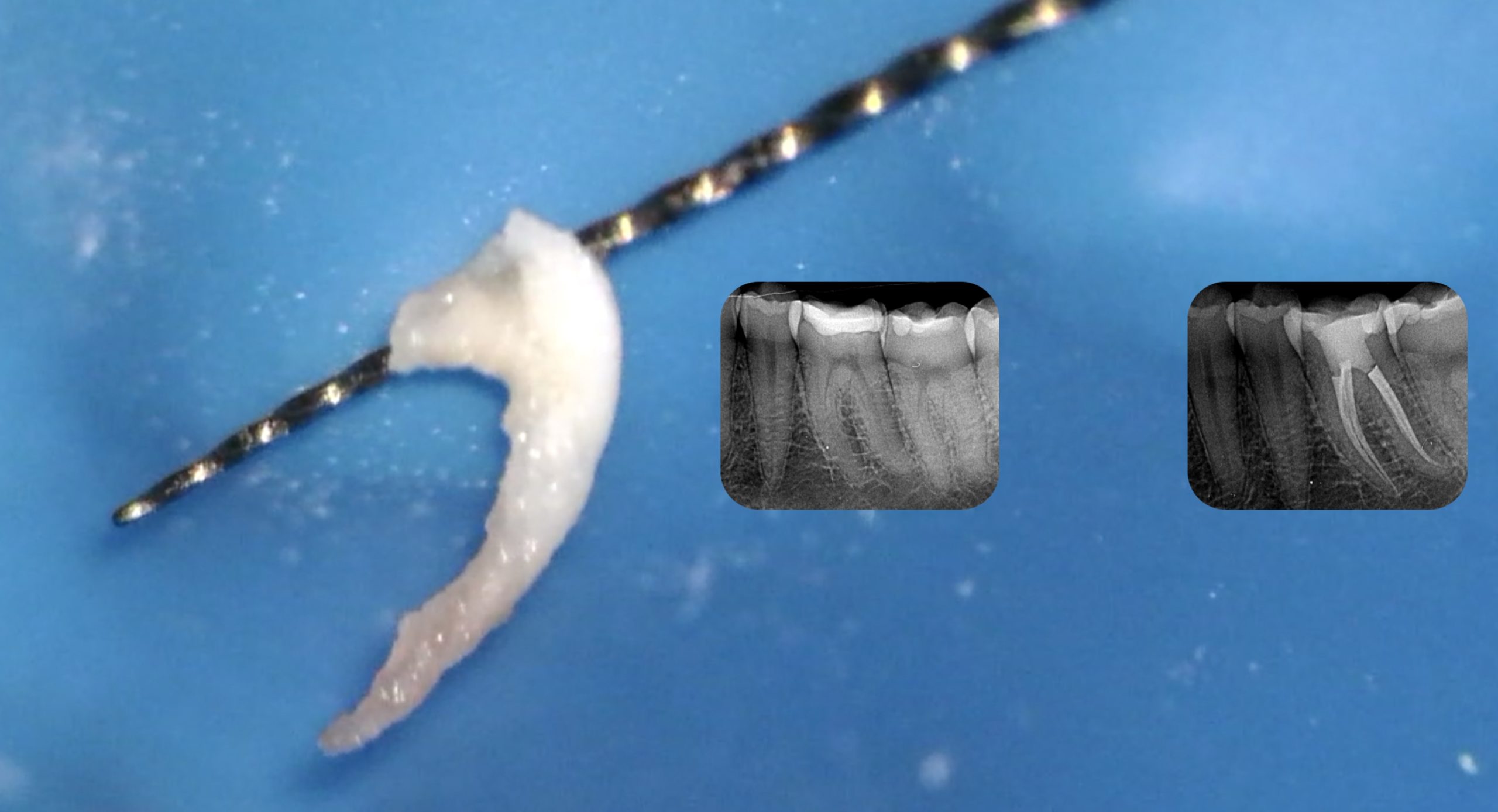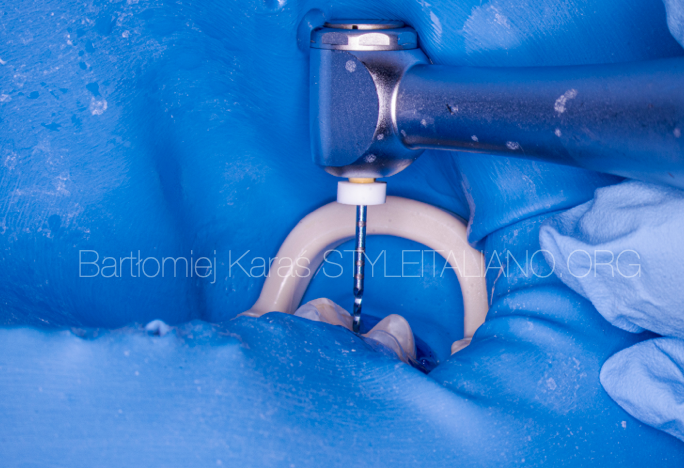
High-Tech files for demanding cases
24/04/2023
Bartłomiej Karaś
Warning: Undefined variable $post in /var/www/vhosts/styleitaliano-endodontics.org/endodontics.styleitaliano.org/wp-content/plugins/oxygen/component-framework/components/classes/code-block.class.php(133) : eval()'d code on line 2
Warning: Attempt to read property "ID" on null in /var/www/vhosts/styleitaliano-endodontics.org/endodontics.styleitaliano.org/wp-content/plugins/oxygen/component-framework/components/classes/code-block.class.php(133) : eval()'d code on line 2
This article will describe the important factors of the challenging cases of root canal treatment performed with Ni-Ti files.
Introducing heat treatment to the world of endodontics made a huge revolution in the root canals shaping procedures. In most cases the heat treated files became much more flexible and moreover more resistant in many cases. Those fact allowed the clinicians to shape the root canals in much easier and more predictable way. Days of six or eight file sequences with very demanding manula instrumentation for the curved canals were over!
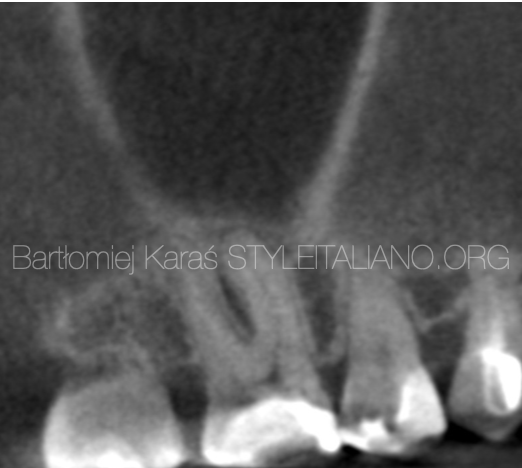
Fig. 1
Another patient was referred for the root canal treatment of the first upper right molar
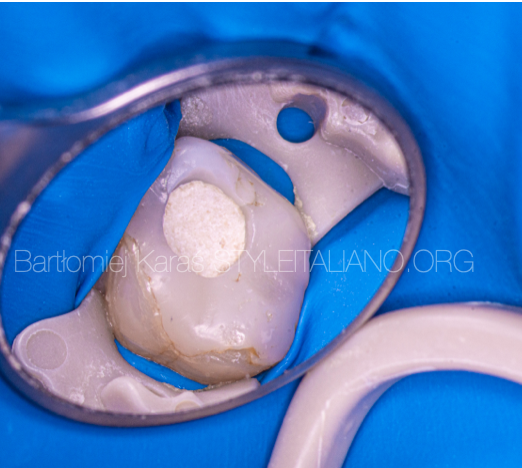
Fig. 2
The treatment was started but as an emergency appointment and the tooth was closed with a temporary restoration.
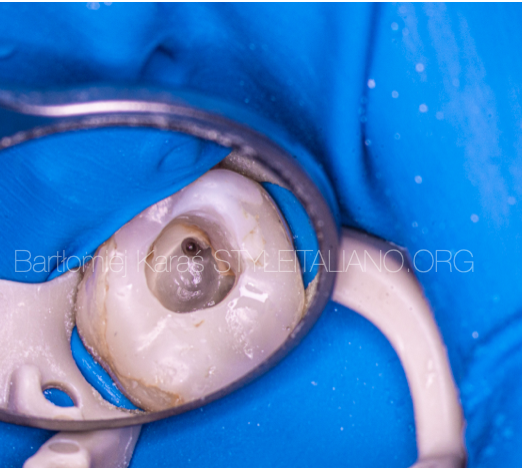
Fig. 3
Not all of the root canal orificies were found and shaped.
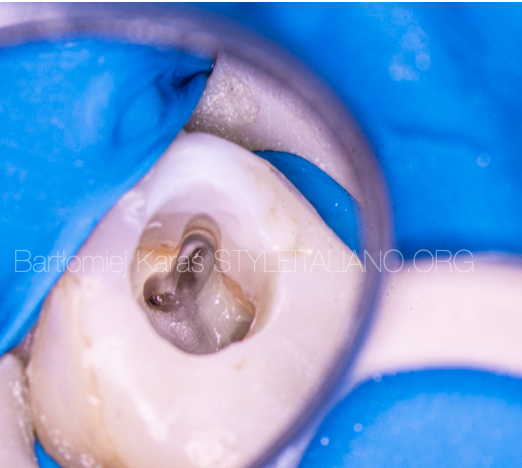
Fig. 4
Refining the access cavity required the ultrasonic tips, what allowed to find previously undiscovered MB1 orifice.
All the canals wew shaped with a simplified crown down technique. In canals with working length shorter than 18mm usually only the orifice opener file can be used in the crown down technique. This is because in that short canals we can use the orifice opener file for approximately 5mm of the root canal which allows us to reach the apical foramen eaisly with the hand file. The video shows that concept step by step. It is very important to maintain activated irrigation and patency between each file.

Fig. 5
MG3 blue
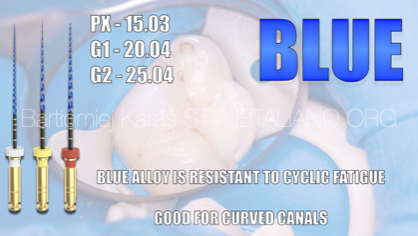
Fig. 6
PX - 15.03
G1 - 20.04
G2 - 25.04

Fig. 7
After the obturation the periapical Xray was taken. Even that the working length was short and the root supposed to be straight in the pre operative examination we can clearly see that the apical part has visible curvatures which shows us how important is the flexibility of the files in terms of the correct shape of the apical constriction.
Conclusions
MG3 blue is a safe and efficient system to shape curved canals
Bibliography
- Khalighinejad N. et. al.: The Effect of the Dental Operating Microscope on the Outcome of Nonsurgical Root Canal Treatment: A Retrospective Case-control Study, Journal of Endodontics, Volume 43, Issue 5, 728 - 732.
- Tortini D, Colombo M, Gagliani M. Apical crown technique to model canal roots. A review of the literature. Minerva Stomatol. 2007 Sep;56(9):445-59. English, Italian. PMID: 17938624.
- Arias, A. & Peters, O.A. (2022) Present status and future directions: Canal shaping. International Endodontic Journal, 55(Suppl. 3), 637– 655.
- Vanni JR, Santos R, Limongi O, Guerisoli DM, Capelli A, Pécora JD. Influence of cervical preflaring on determination of apical file size in maxillary molars: SEM analysis. Braz Dent J. 2005;16(3):181-6. doi: 10.1590/s0103-64402005000300002. Epub 2006 Jan 12. PMID: 16429181.
- Logdson et al,. Current Trends in Use and Reuse of Nickel-Titanium Engine-driven Instruments: A Survey of Endodontists in the United States, Journal of Endodontics, Volume 46, Issue 3, 391 - 396



